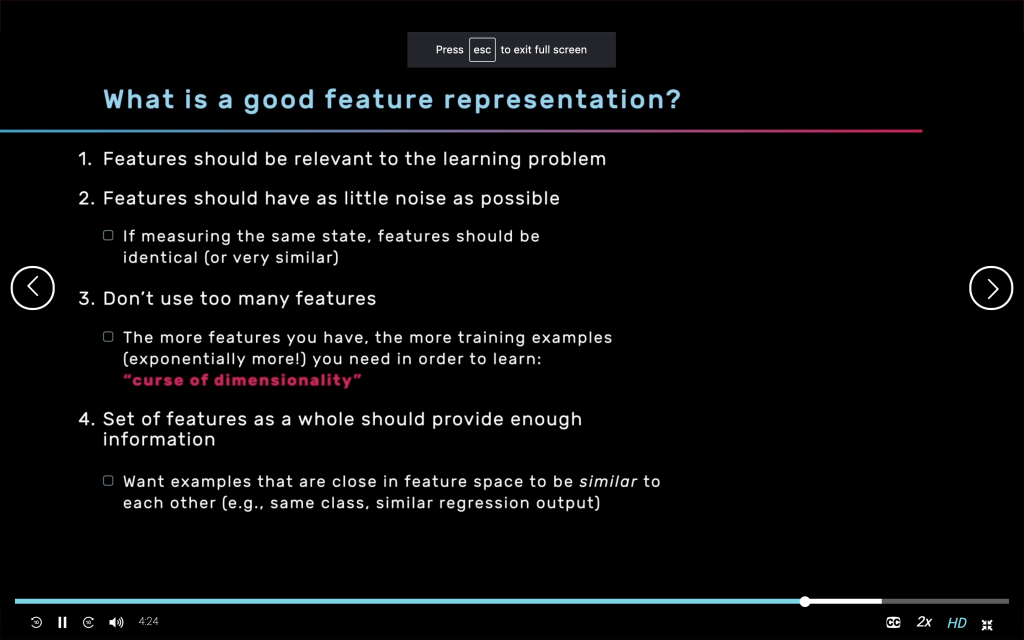
- Classification:
- The computer will recognize a specific number of categories (classes)
- The categories are mutually exclusive
- The classifier always outputs one of the known categories
- Good Uses in Music:
- Use this effect when you see X, don’t when you see Y
- Set increase volume when the pitch is above frequency X, turn down the volume when the pitch is below frequency Y
- Change lighting when I am on X part of the stage
Types of Classification to Use-
- Nearest-Neighbor Classifier:
- Looks through all the training examples and finds the one point in the training set that’s closest to the current input and then uses the identical output to that chosen input in the training set
- Decision Stump:
- Learns a threshold from examples
- Sets threshold (i.e. a line through a 2d space or a plane through a 3d space)
- Learns an if/else block
- i.e. If the threshold is met, output class 1 output, else output class 2 output
- Can only deal with one if/else chunk
- Only for educational purposes really (very limited)
- K-Nearest Neighbor Classifier:
- Looks at k # of nearest neighbors and follows the majority
- If most of them are class 1, current input will output class1 & vice versa, etc…
- Decision Trees!!
- Set of if/else blocks that can be nested in each other
- Examples of Real-World Use:
- Banking algorithms that decide whether a transaction on a credit card is fraudulent
- Doctors looking at tests determining if a patient looks at risk for/to have a certain disease
- Algorithms that decide if a certain incoming message should be sorted as spam or not
- Facial recognition (is there a face in this picture? Where? who?)
- Are you likely to buy a certain product (targeted ads)
- Are you pregnant based on your spending history (apparently commonly found out by retailers…)